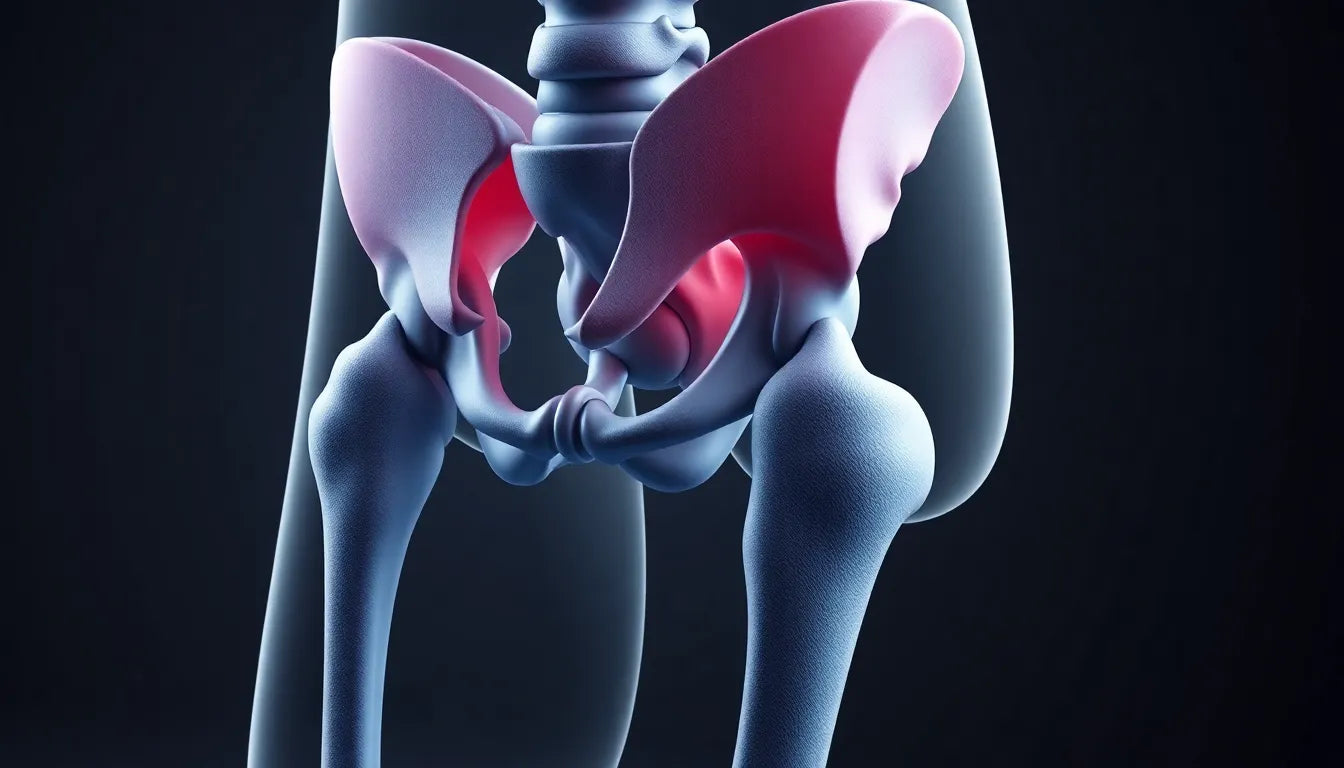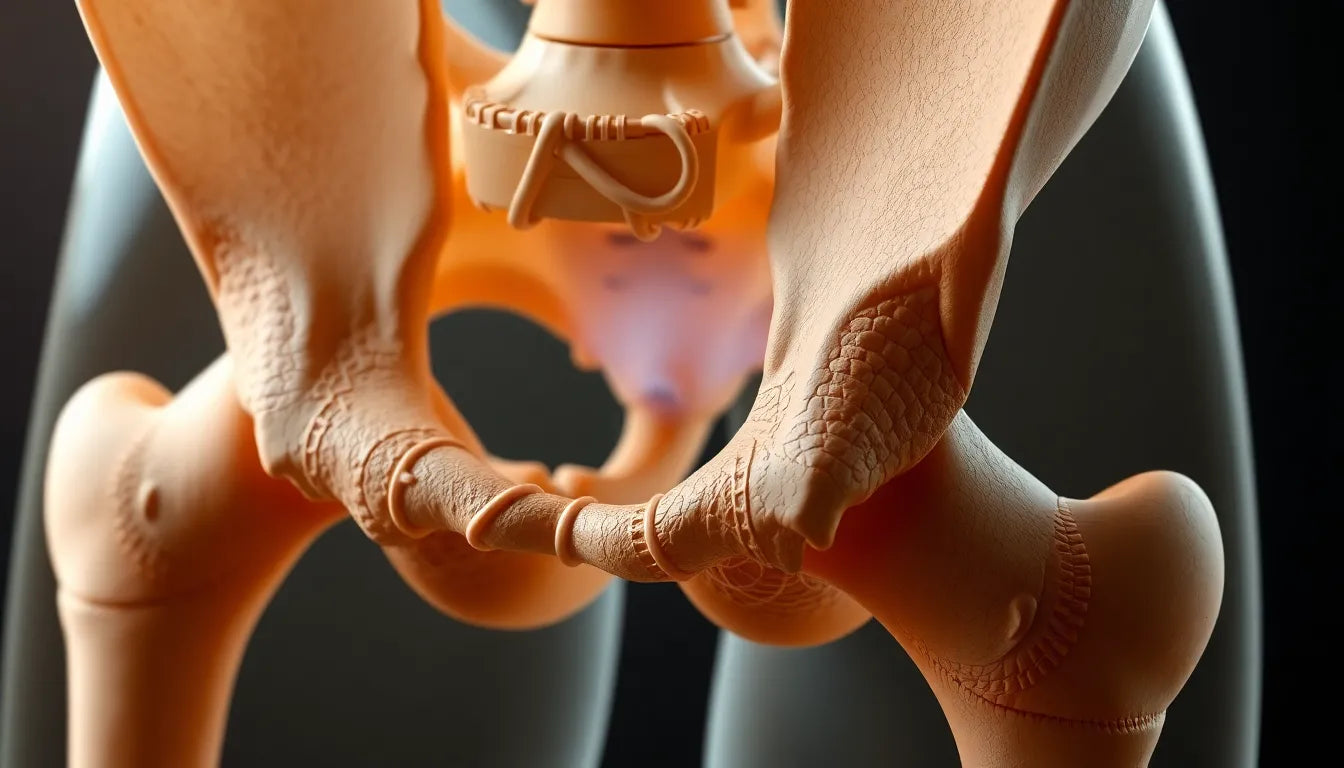Have you ever felt a sharp pain around your waistline after a long day at work or following a strenuous workout? This discomfort might be originating from your iliac crest, the upper curved edge of your pelvic bone. It's a common site for musculoskeletal pain, affecting many people and impacting their daily activities and overall quality of life.
understanding the iliac crest
The iliac crest is more than just a bony prominence you can feel around your waist. It plays a crucial role in your body's biomechanics as an attachment point for several important muscles. These include the abdominals, hip flexors, gluteals, and back muscles, all of which contribute to your posture and movement. Given its pivotal position and function, it's no surprise that pain in the iliac crest can significantly disrupt your day-to-day life.
commonality and impact of iliac crest pain
Iliac crest pain is a frequent complaint among individuals, whether they are athletes, office workers, or anyone in between. The pain can be sharp or dull, and it often radiates to the lower back, groin, or hip, making even simple movements like walking, bending, or twisting uncomfortable. This type of pain can arise from various causes, including muscle strain, ligament injuries, or nerve compression, each affecting the iliac region in different ways.
Muscle strain is a typical cause, often resulting from overuse or improper exercise techniques. Similarly, ligament injuries, particularly to the iliolumbar ligament, can lead to persistent discomfort known as "iliolumbar syndrome." Additionally, nerve compression, particularly involving the cluneal or subcostal nerves, can contribute to the pain experienced in this area.
Understanding the underlying causes of iliac crest pain is essential for effective management and relief. By identifying the source, whether it's a result of trauma, inflammation, or nerve involvement, individuals can seek appropriate treatment and regain their quality of life.
exploring the causes of iliac crest pain
Understanding the root causes of pain in the iliac crest is crucial for effective treatment and relief. One of the most prevalent causes is muscle strain and overuse. Engaging in improper exercise techniques or repetitive activities can lead to muscle fatigue and strain, particularly affecting the muscles attached to the iliac crest. This strain can manifest as sharp pain or a persistent ache, impacting your ability to perform daily tasks.
Trauma and injuries are also significant contributors to iliac crest pain. Falls, direct blows, or accidents can result in bruising or fractures in the pelvic region, leading to acute discomfort. Moreover, ligament issues, especially involving the iliolumbar ligament, can cause chronic pain. This condition, often referred to as "iliolumbar syndrome," arises from ligament inflammation or tears, resulting in persistent pain and discomfort.
Another important factor is sacroiliac joint dysfunction. The sacroiliac joint, located near the iliac crest, can become misaligned or inflamed, leading to pain that radiates to the iliac region. This dysfunction is often exacerbated by pregnancy and childbirth, as the increased pelvic stresses during these periods can strain the joint and surrounding structures.
Nerve involvement is a less obvious but significant cause of iliac crest pain. Nerve compression, particularly involving the cluneal or subcostal nerves, can lead to pain that extends from the lower back to the iliac crest. This type of pain is often accompanied by numbness, tingling, or even leg weakness, complicating the diagnosis and treatment.
Inflammatory conditions such as arthritis or bursitis can also contribute to pain in the iliac crest. These conditions cause inflammation in the joints or bursae, leading to pain and stiffness that can affect mobility. Additionally, spinal and postural issues, including anterior pelvic tilt, tight iliotibial bands, and poor core strength, can exacerbate iliac crest pain by altering the body's alignment and biomechanics.
symptoms and diagnosis of iliac crest pain
Identifying the symptoms of iliac crest pain is the first step toward diagnosis and treatment. Common symptoms include localized pain over the iliac crest, which may radiate to the lower back, groin, or hip. This pain is often exacerbated by activities such as walking, bending, twisting, or applying direct pressure to the area. In some cases, individuals may also experience stiffness, numbness, tingling, or leg weakness, particularly if nerve structures are involved.
Accurate diagnosis requires a comprehensive clinical assessment. Healthcare professionals will typically conduct a thorough evaluation to identify the musculoskeletal, nerve, and joint sources of the pain. This may involve a physical examination, where the clinician assesses the range of motion, muscle strength, and areas of tenderness. Imaging techniques such as X-rays, MRIs, or CT scans may also be used to provide a detailed view of the pelvic region and identify any structural abnormalities or injuries.
Ultimately, understanding the specific cause of iliac crest pain is essential for developing an effective treatment plan. By addressing the underlying issues, whether they are related to muscle strain, ligament injuries, nerve compression, or inflammatory conditions, individuals can achieve relief and regain their quality of life.
effective treatment options for iliac crest pain
Finding relief from pain in the iliac crest often begins with conservative management strategies. Rest is crucial to allow the affected area to heal, and applying ice or heat can help reduce inflammation and alleviate discomfort. Over-the-counter nonsteroidal anti-inflammatory drugs (NSAIDs) are often recommended as a first-line treatment to manage pain and swelling.
Physical therapy plays a vital role in the recovery process. A tailored program focusing on muscle strengthening, stretching, and correcting postural dysfunctions can significantly improve symptoms. Strengthening the core and pelvic muscles helps stabilize the area, reducing strain on the iliac crest. Stretching exercises can relieve tension in the surrounding muscles, enhancing flexibility and promoting better movement patterns.

Lumbar support belt
Supports and stabilizes your lower back to combat pain and relieve tension.
In some cases, supportive devices like belts or braces can provide additional stability and support to the pelvic region, aiding in pain management. These aids can be particularly useful during activities that might otherwise exacerbate the pain.
advanced therapies and surgical options
For individuals with persistent iliac crest pain that doesn't respond to conservative treatments, advanced therapies may be considered. Corticosteroid injections can provide significant relief by reducing inflammation in the affected area. Additionally, Platelet-Rich Plasma (PRP) therapy, which involves injecting concentrated platelets from the patient's own blood, can promote healing and reduce pain.
Surgical intervention is generally a last resort and is considered only in severe or refractory cases. Procedures may involve repairing damaged ligaments or addressing structural issues contributing to the pain. A thorough evaluation by a healthcare professional is essential to determine the most appropriate course of action.
ergonomics and lifestyle modifications
Incorporating ergonomic aids and lifestyle modifications can help prevent and alleviate pain in the iliac crest. Ensuring proper posture while sitting and standing, using lumbar supports, and choosing ergonomic chairs can reduce strain on the pelvic region. Additionally, regular breaks during prolonged periods of sitting or standing can prevent muscle fatigue and discomfort.
Engaging in regular physical activity and maintaining a healthy weight are also important factors in managing iliac crest pain. Exercise not only strengthens the muscles supporting the iliac crest but also improves overall flexibility and mobility, reducing the likelihood of strain and injury.
practical advice and exercises
Incorporating specific exercises and stretches into your routine can help alleviate iliac crest pain. Here are some recommended exercises:
- Pelvic tilts: Lie on your back with knees bent and feet flat on the floor. Gently tilt your pelvis upward, flattening your lower back against the floor. Hold for a few seconds and release.
- Hip flexor stretch: Kneel on one knee, with the other foot in front. Lean forward slightly, keeping your back straight, until you feel a stretch in the front of the hip. Hold for 20-30 seconds.
- Glute bridge: Lie on your back with knees bent and feet flat. Lift your hips toward the ceiling, squeezing your glutes at the top. Hold for a few seconds and lower.
- Cat-cow stretch: On all fours, alternate between arching your back (cat) and dipping it (cow), moving slowly and smoothly.
These exercises can help strengthen the muscles around the iliac crest, improve flexibility, and reduce pain over time. Always consult with a healthcare professional before starting any new exercise regimen, especially if you have existing health conditions.
frequently asked questions
what is the iliac crest, and why does it hurt?
The iliac crest is the upper curved edge of the pelvic bone, serving as an attachment point for various muscles. Pain in this area can result from muscle strain, ligament injuries, nerve compression, or inflammation.
how can I differentiate iliac crest pain from other types of lower back pain?
Iliac crest pain is often localized to the waistline and may radiate to the lower back, groin, or hip. It is typically exacerbated by specific movements such as bending or twisting. A clinical assessment can help differentiate it from other types of lower back pain.
what are the best exercises to relieve iliac crest pain?
Exercises like pelvic tilts, hip flexor stretches, glute bridges, and cat-cow stretches can help relieve iliac crest pain by strengthening and stretching the surrounding muscles.
when should I see a doctor for iliac crest pain?
If your pain persists despite conservative treatment, or if you experience symptoms like numbness, tingling, or leg weakness, it's important to consult a healthcare professional for a thorough evaluation.
are there specific ergonomic products that can help with iliac crest pain?
Yes, using ergonomic chairs, lumbar supports, and maintaining proper posture can help alleviate and prevent iliac crest pain. Regular breaks and adjustments in your work environment can also be beneficial.

Men's Posture Shirt™ - Black
Activates muscles and improves postural awareness, helps relieve pain while maintaining comfort.
Källor
- Aesthetics and Medical Lasers. "Iliac Crest Pain Syndrome."
- Nationwide Children's. "Sports Medicine: Hip Pointer."
- WebMD. "Causes of Iliac Crest Pain and Exercises to Reduce Pain and Ache."
- SoCal Hip. "About Iliac Crest Pain & Pelvic Pain."
- Dr. Justin Dean. "Iliac Crest Pain."
- Back Muscle Solutions. "Iliac Crest Pain."
- Spinal Backrack. "Iliac Crest Pain Syndrome: Causes and Treatment."
- Hinge Health. "Iliac Crest Pain."
- Healthline. "Iliac Crest Pain."
- Cedars-Sinai. "Sacroiliac Joint Dysfunction."


















